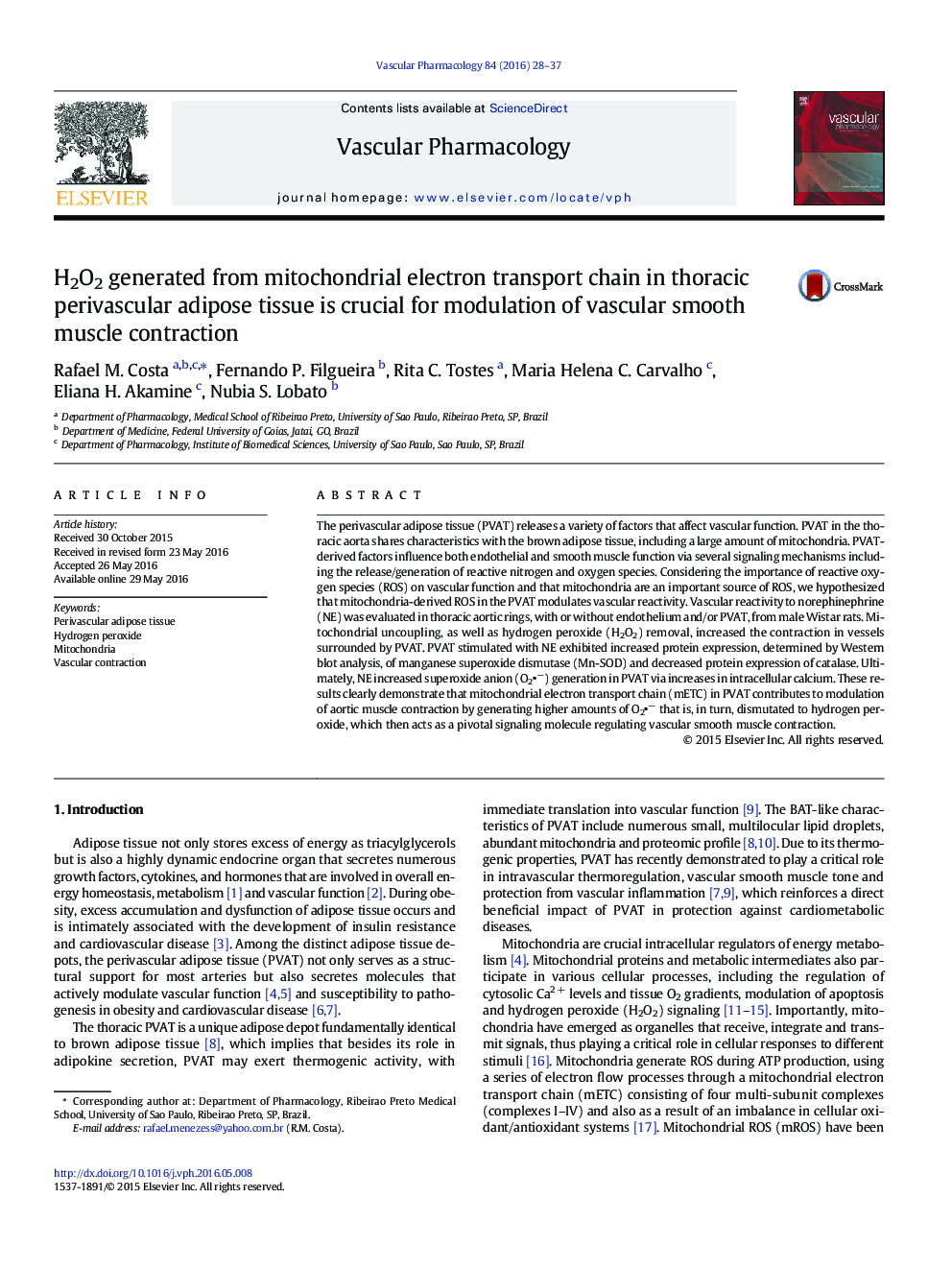| Article ID | Journal | Published Year | Pages | File Type |
|---|---|---|---|---|
| 2573903 | Vascular Pharmacology | 2016 | 10 Pages |
The perivascular adipose tissue (PVAT) releases a variety of factors that affect vascular function. PVAT in the thoracic aorta shares characteristics with the brown adipose tissue, including a large amount of mitochondria. PVAT-derived factors influence both endothelial and smooth muscle function via several signaling mechanisms including the release/generation of reactive nitrogen and oxygen species. Considering the importance of reactive oxygen species (ROS) on vascular function and that mitochondria are an important source of ROS, we hypothesized that mitochondria-derived ROS in the PVAT modulates vascular reactivity. Vascular reactivity to norephinephrine (NE) was evaluated in thoracic aortic rings, with or without endothelium and/or PVAT, from male Wistar rats. Mitochondrial uncoupling, as well as hydrogen peroxide (H2O2) removal, increased the contraction in vessels surrounded by PVAT. PVAT stimulated with NE exhibited increased protein expression, determined by Western blot analysis, of manganese superoxide dismutase (Mn-SOD) and decreased protein expression of catalase. Ultimately, NE increased superoxide anion (O2−) generation in PVAT via increases in intracellular calcium. These results clearly demonstrate that mitochondrial electron transport chain (mETC) in PVAT contributes to modulation of aortic muscle contraction by generating higher amounts of O2− that is, in turn, dismutated to hydrogen peroxide, which then acts as a pivotal signaling molecule regulating vascular smooth muscle contraction.
Graphical abstractFigure optionsDownload full-size imageDownload high-quality image (94 K)Download as PowerPoint slide
